River Kwai – Visiting a Legendary Bridge
This is my third post from Thailand. In the first one I gave a general overview of Bangkok and in the second Alison and I visited the amazing Grand Palace. In this post we are going to leave the city and visit a site that is iconic in both fact and fiction. The Bridge on the River Kwai is rightly considered to be one of the greatest war movies ever made. Although it is based upon a novel by the French author Pierre Boulle, who also wrote Planet of the Apes, it does record many of the events associated with the building of the Burma railway by Allied prisoners of war from 1942-1943. Known as the Death Railway, over 90,000 civilians and 12,000 prisoners of war died during its construction. It was considered one of the greatest war crimes in history and a number of Japanese officers and enlisted men were executed for their roles in these deaths. In this post Alison and I will visit the site of the actual bridge over the River Kwai, the museum and cemetery that documents the Death Railway and take a train ride on that railway. Please come along for the ride.
Kanchanaburi is a small city of just over 25,000 inhabitants that was a defensive outpost on what was once the border between the often warring kingdoms of Siam and Burma. It has a strategic location where the Khwae Noi and Khwae Yai rivers converge to create the Mae Klong River. For the purposes of this post I’ll refer to all three bodies of water as the River Kwai. The actual bridge we will be visiting crosses the Khwae Noi just up from the juncture with the Khwai Yai. The city is situated 123 kms.(76 miles) due west of Bangkok, but it takes well over two hours to get there as Bangkok just goes on and on before the four line highway finally becomes a rural two-laner not far from our destination. We are in this van with our driver and our guide Su, both provided by Trails of Indochina with which I have collaborated to create our Thai itinerary.
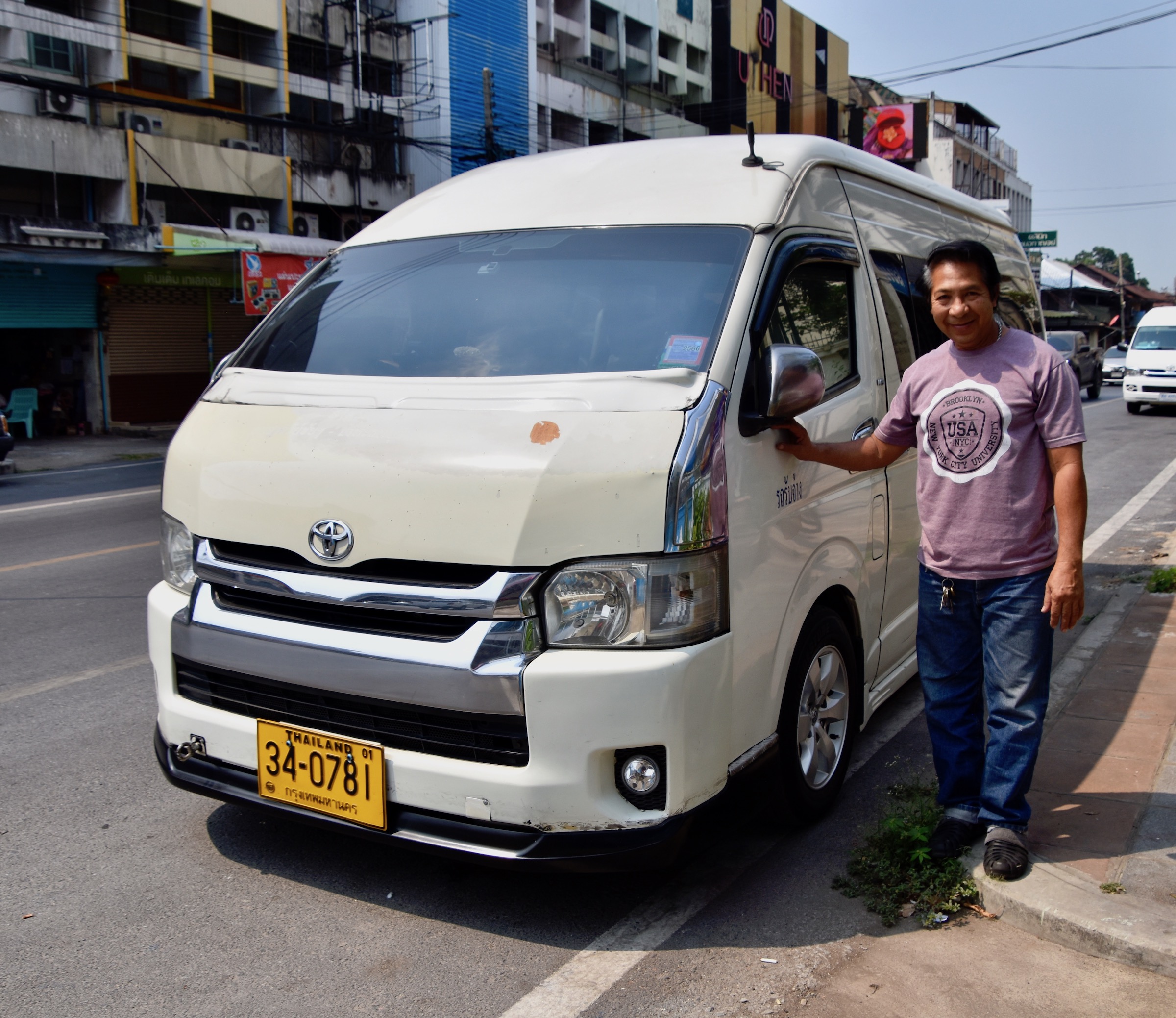
The Death Railway Museum
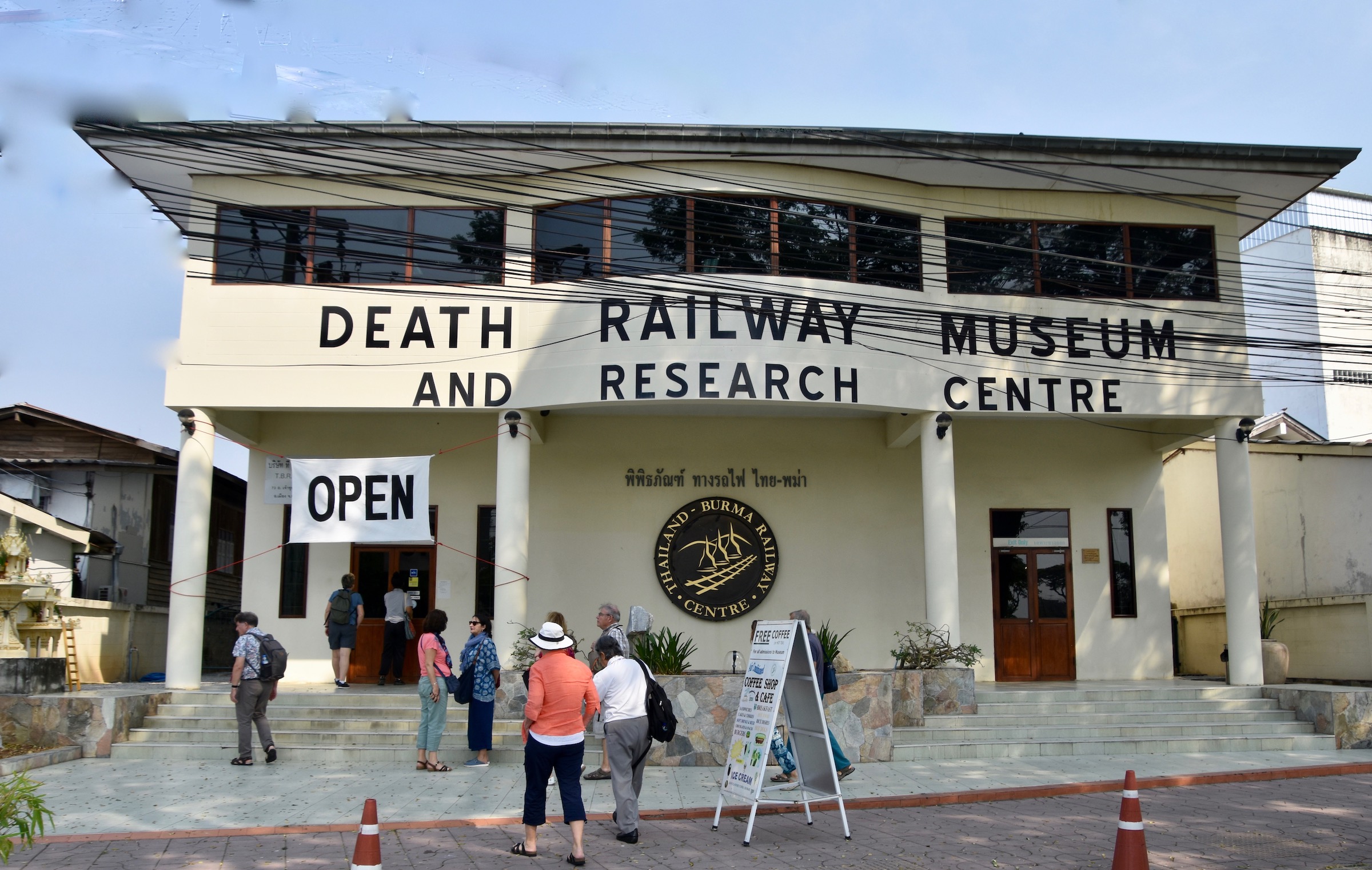
Our first stop in Kanchanaburi is the Death Railway Museum where we will learn the true story behind the events that inspired Pierre Boulle to write Bridge Over the River Kwai. This is a very brief summary of those facts.
Japan invaded neutral Thailand in December 1941 and quickly overpowered it. Then in rapid succession Burma, Malaya, Singapore and the Dutch East Indies (aka Indonesia) all fell in the first half of 1942. It seemed everything was going Japan’s way until it suffered a stunning naval defeat at Midway in June of that year. Suddenly control of the seas reverted to the Allies and Japan could no longer supply its garrisons in Burma by going around the Malay Peninsula by ship. Rail then became the preferred alternative. There were already railways in Burma and Thailand, but they did not connect. The Japanese needed to build a 415 km. (258 mile) line to connect the two ends and they needed to do it fast.
The overwhelming of the British and Dutch colonies had netted the Japanese thousands of POWs and it was decided that these, along with conscripted local workers would provide the labour. This exhibit at the museum recreates the conditions in which Australian POWS were shipped by train from Singapore to Thailand to become forced labourers. You’ll note that they are reasonably healthy young men.
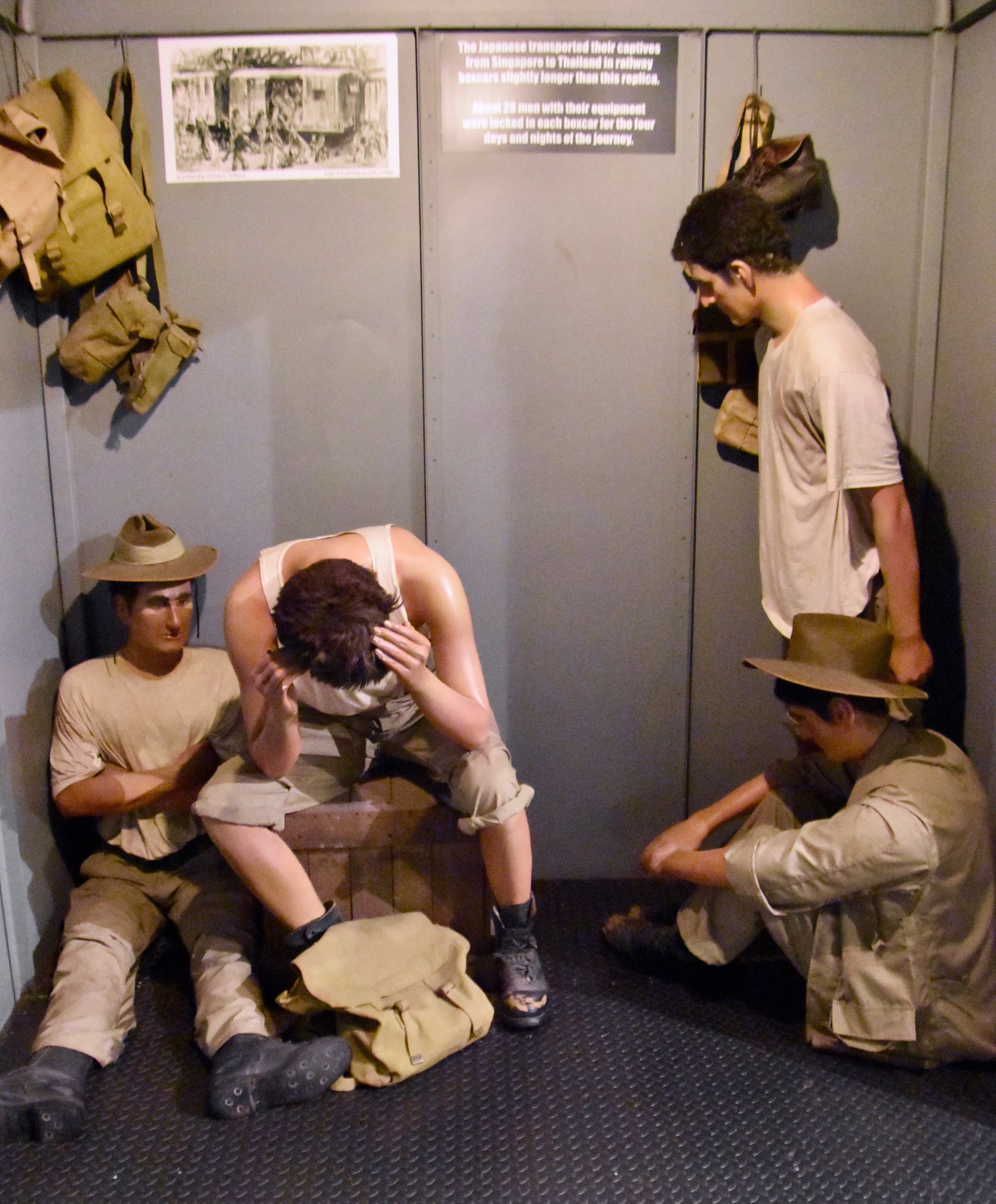
This famous sculpture in the museum shows what these same men, or at least those who survived, looked like when they were liberated some three years later. Not much different than those found in the European concentration camps.
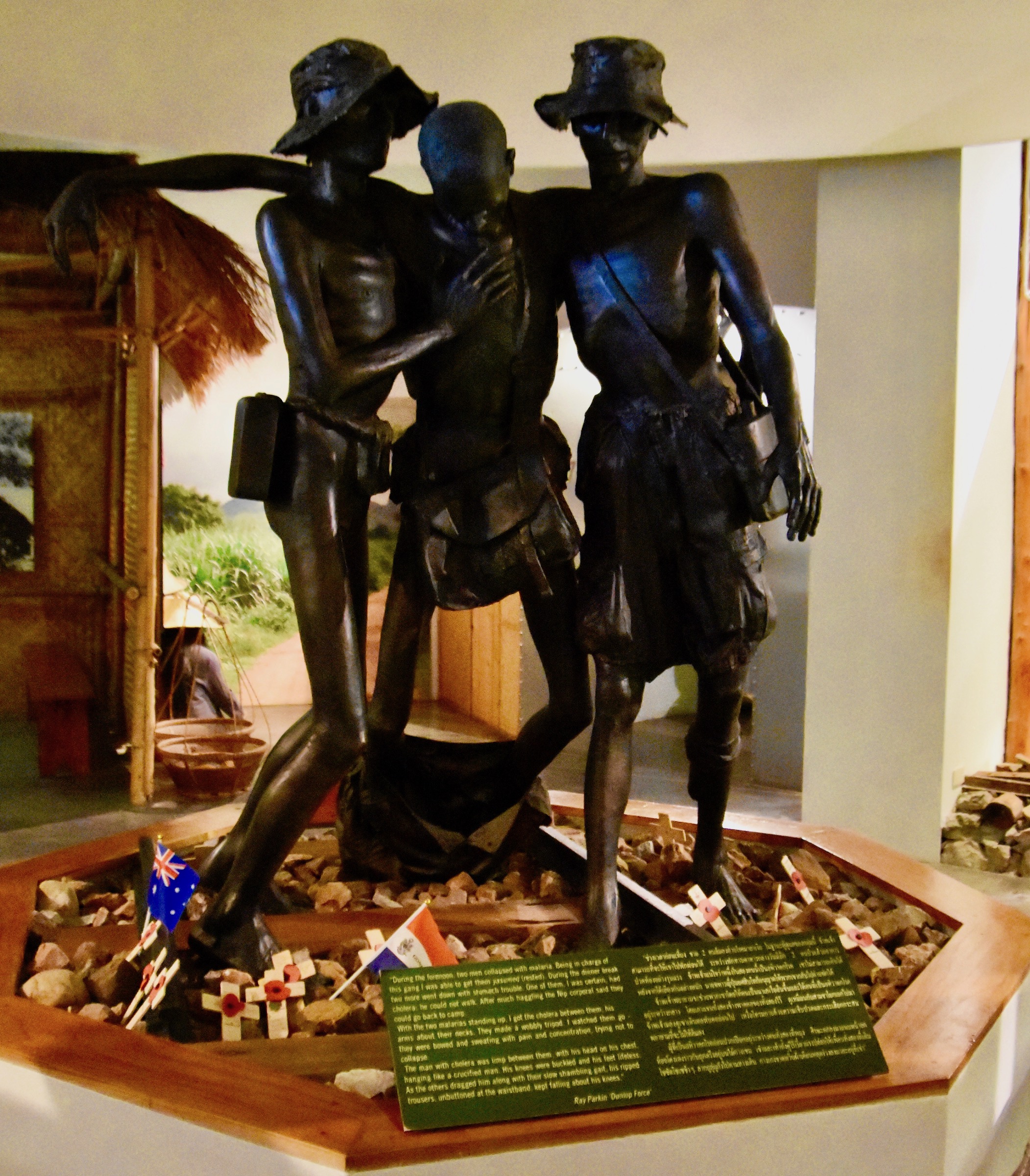
The POWs were literally worked to death, sometimes forced to work 62 straight hours with next to no food or water. The result was a horrendous death toll and a railway that was completed ahead of schedule, opening in October, 1943. There were over 600 bridges built by the forced labourers of which the one crossing the Khwae Noi was number 277. Unlike in the book and movie, the bridge over the River Kwai was not blown up by the prisoners who built it. It survived until very late in the war when it was taken out by the RAF in June, 1945. While the bridge was rebuilt and the railway still runs a short distance from Kanchanaburi to Nam Tok, most of it has reverted to jungle.
There are a number of stained glass works of art in the museum that are noteworthy. This one is the peace window.
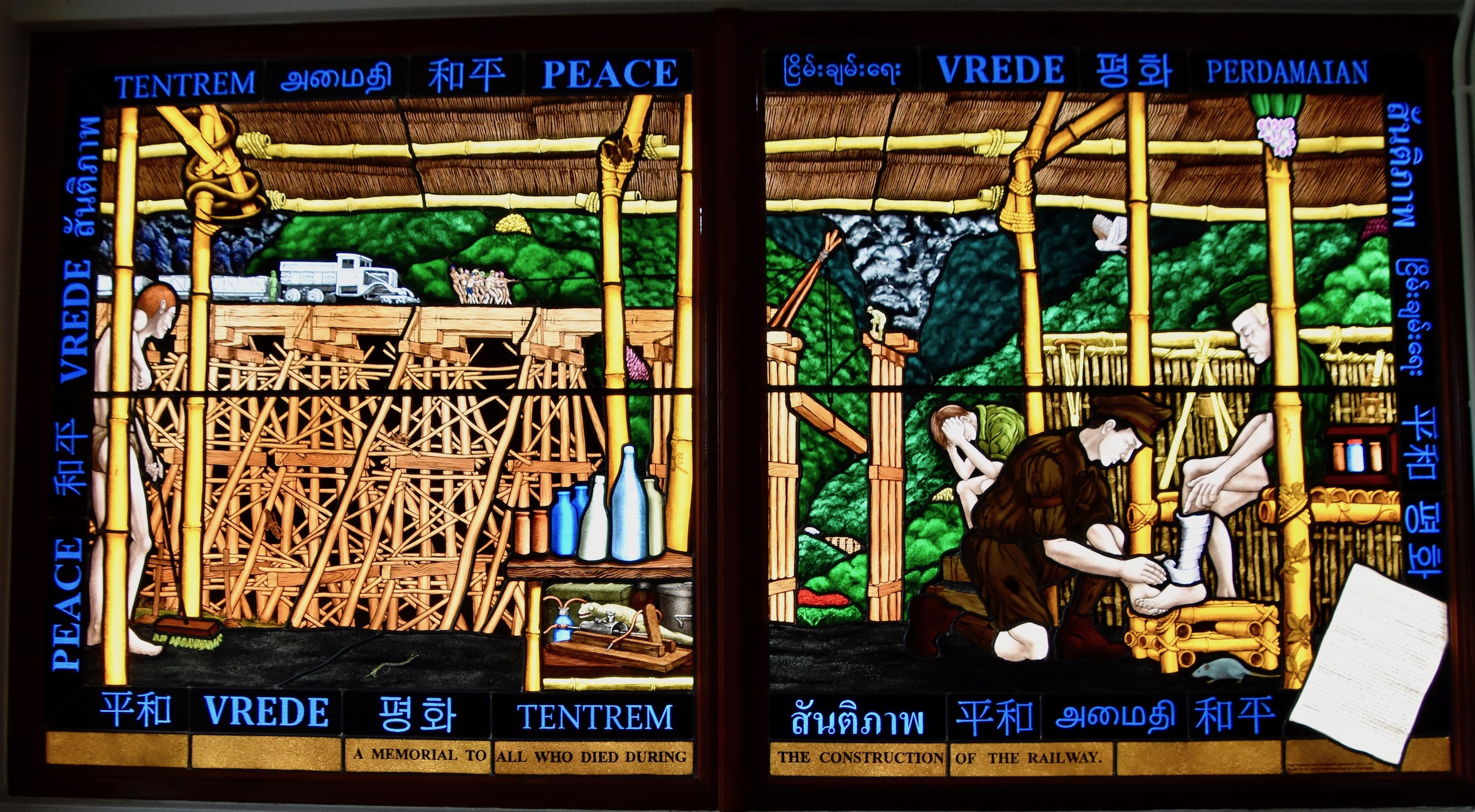
And this one, the Humanitas Window depicts an event that actually occurred at the POW camp nearby. On the left is an arriving trainload of wounded Japanese soldiers. The fact that they had not died for the Emperor, but survived their wounds made them disgraced and they arrived almost dying of thirst. The POWs shared what little water they had and for their efforts were severely beaten by the prison guards.
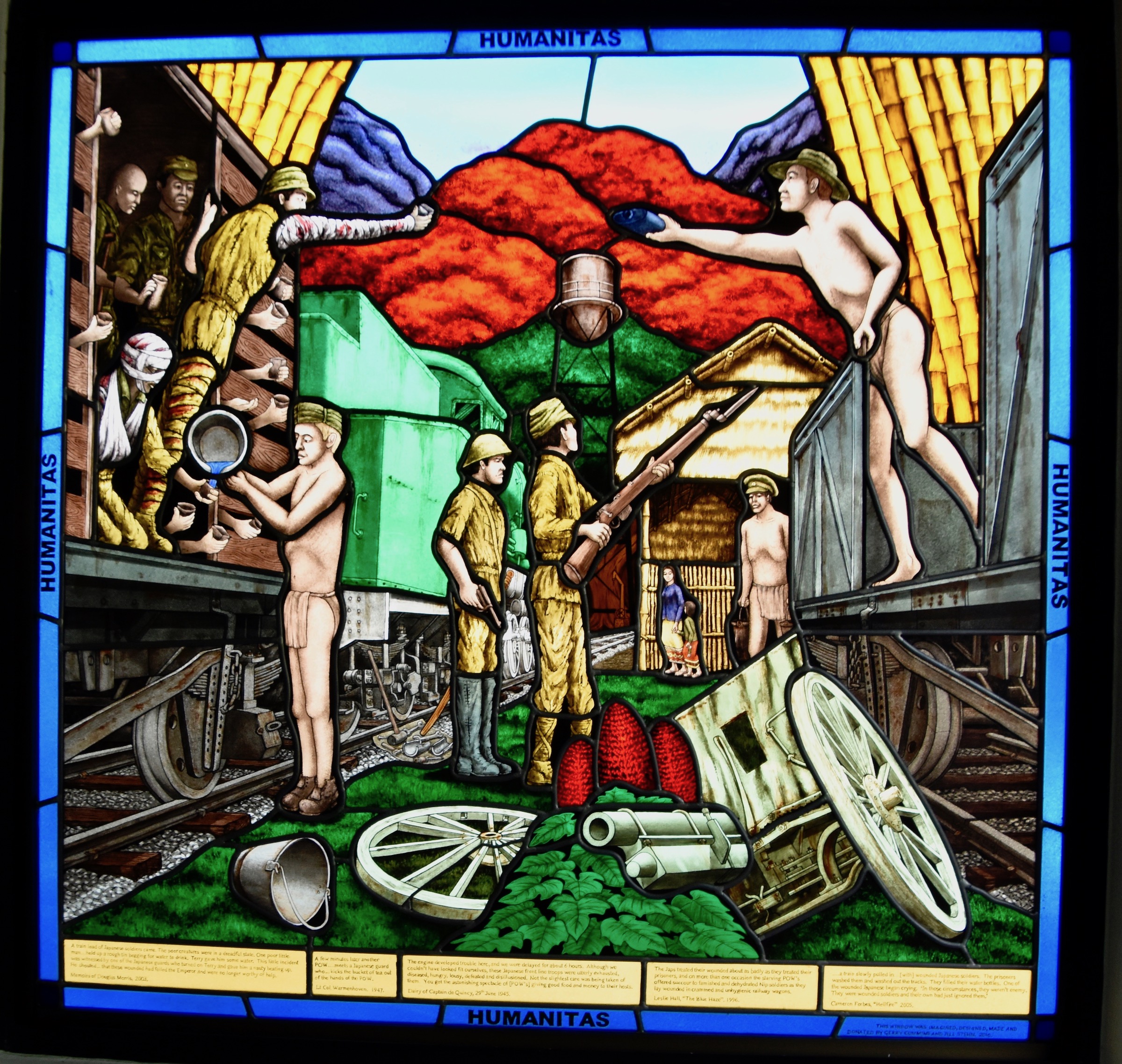
The museum and adjacent cemetery are places of pilgrimage for the relatives of those who were interred here and it does feel like a hallowed place. Alison and I are both pretty solemn as we leave the museum and walk across the street to Kanchanaburi Cemetery.
Kanchanaburi Cemetery
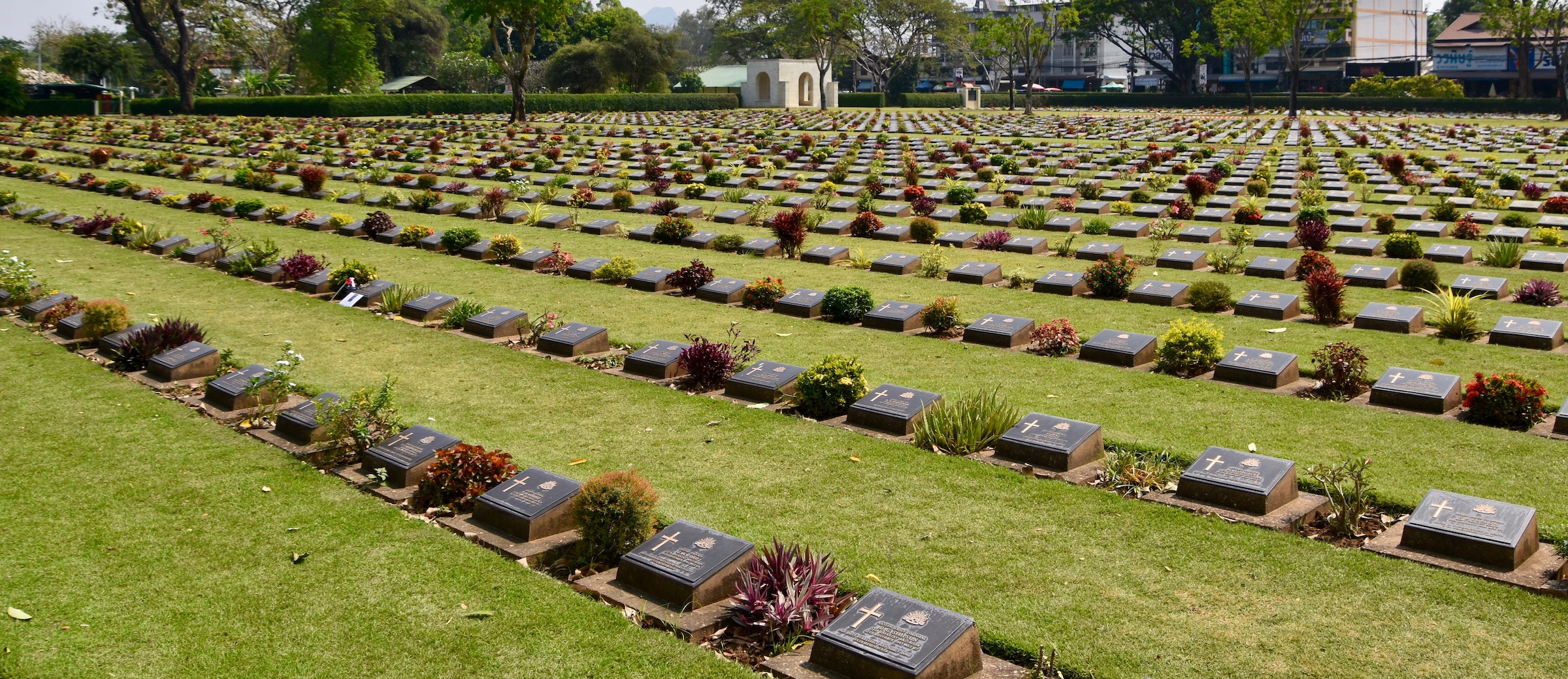
Kanchanaburi Cemetery is maintained by the Commonwealth War Graves Commission about which I have written many posts on this website. It contains the graves of 6,982 war dead, including eight Canadians who were serving in the British army. Visiting a place like this, especially after learning how most of them died while touring the museum, is emotionally difficult. It’s hard enough to come to grips with the stupidity of sending young men and boys to their deaths during the frontal assaults of WWI or the necessary dying on the beaches of Normandy in WWII, but to be treated as nothing but sub-human creatures to be worked to death is almost beyond my comprehension. I not only get sad, but I get mad. The war should have been over for these men when they became POWs as it was for members of the Axis who fell into Allied hands. Instead, thousands of them ended up here.
The Bridge Over the River Kwai
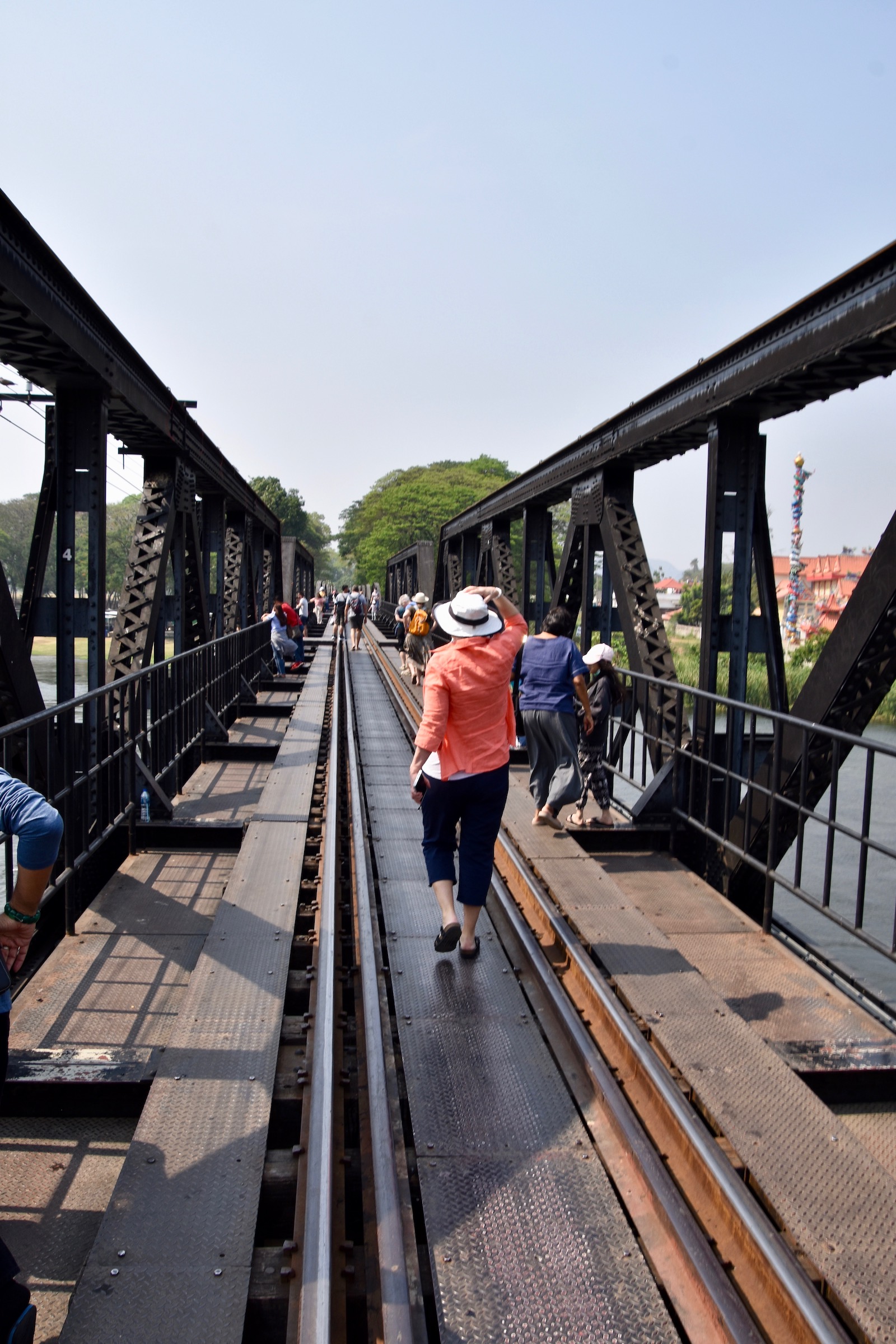
This is the bridge over the River Kwai today. It attracts tourists from around the world and there is definitely a carnival atmosphere created by the many tacky souvenir shops and food stalls surrounding the small train station where people are buying tickets for the soon to depart trip to Nam Tok. It’s a marked contrast to the solemnity of the museum and cemetery. Overhearing some of the conversations around me it is apparent that very few of these soon to be fellow travellers have visited those places or are even aware of them. They are just here to see the famous bridge and ride the train. So be it.
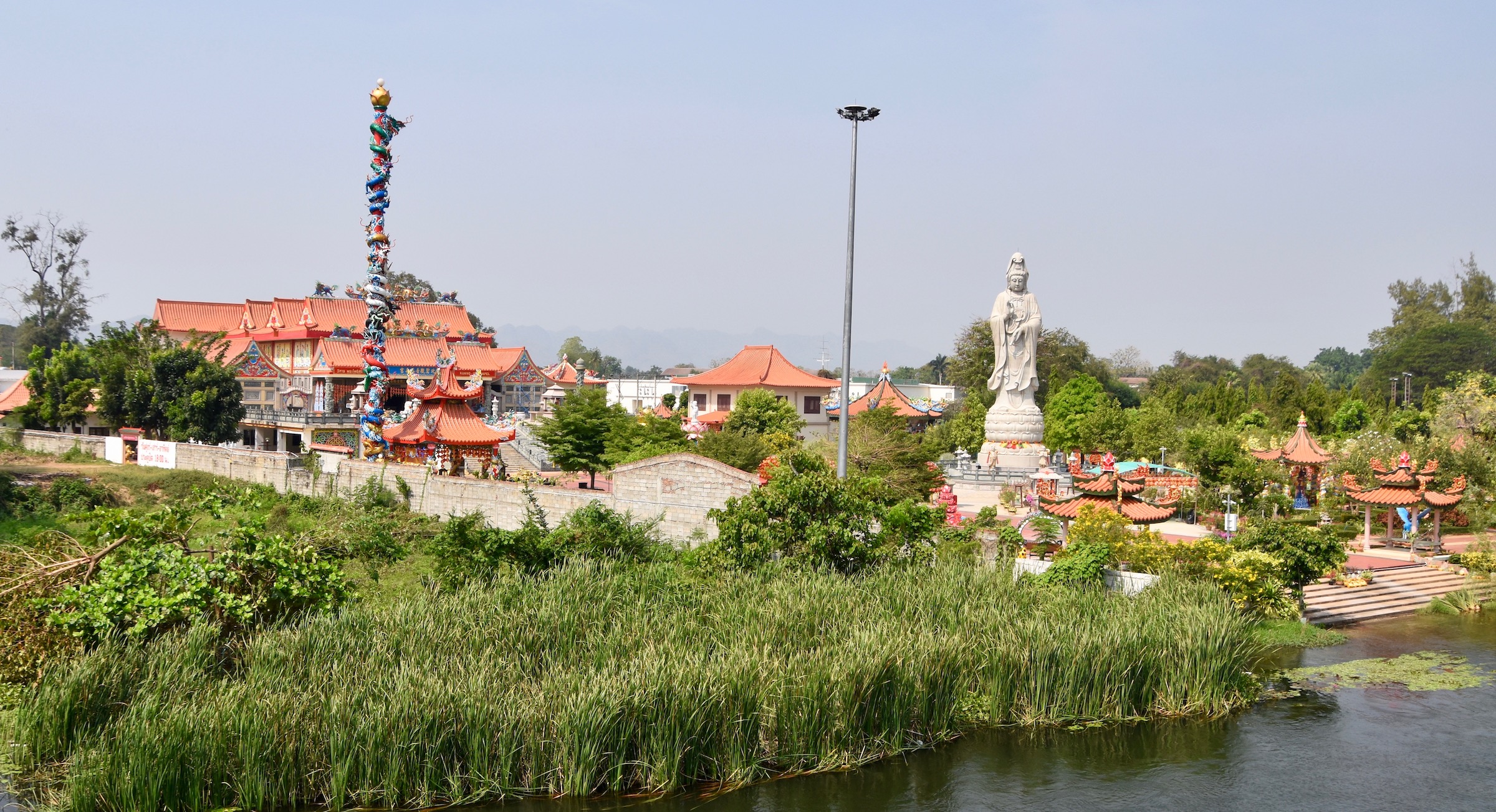
Walking to the far side of the bridge you can see this Buddhist temple complex of which there are quite a few in the Kanchanaburi area.
Returning to the station side of the River Kwai we await the arrival of the train and it does show up reasonably on schedule.
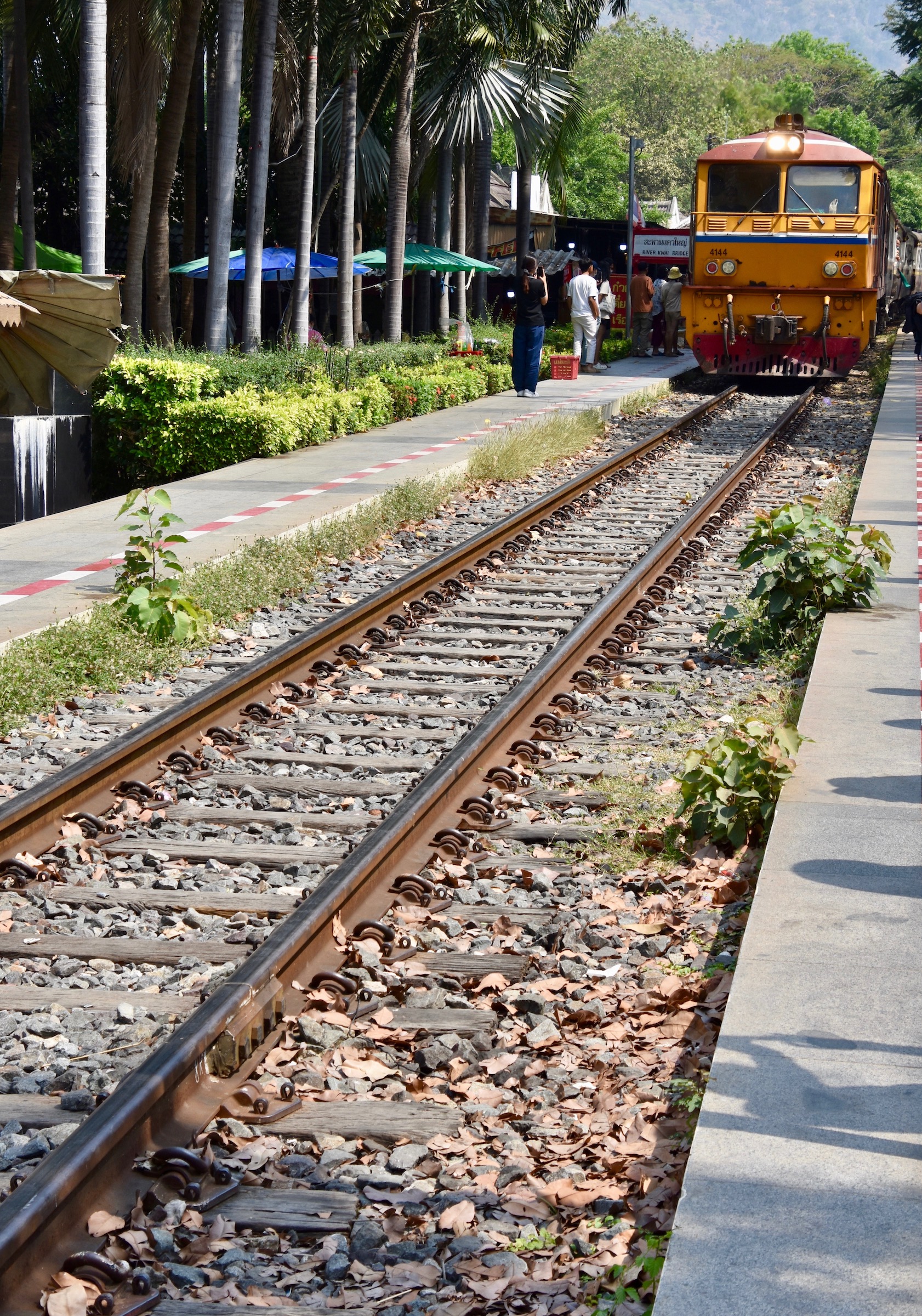
Out ticket to ride gives us assigned seats that are facing backwards which is not my first preference, but the cars are all packed so that can’t be helped. I’m just glad we got tickets in the first place and Su takes our picture as we get ready to go.
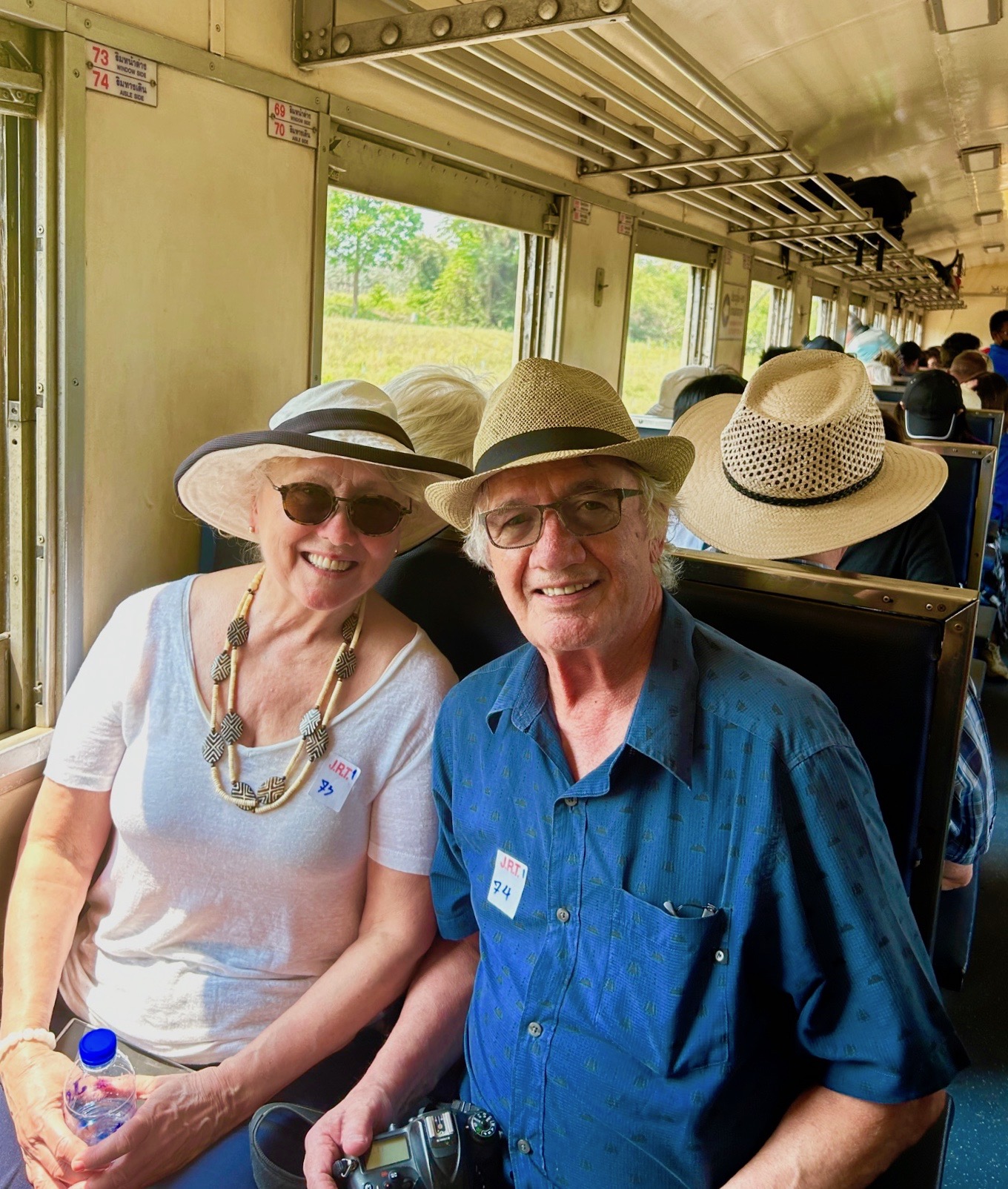
Now I’m not going to pretend that this is the most exciting train trip I’ve ever been on – far from it. Most of the terrain is flat farmland, but hey were on a train in Thailand going over the bridge on the River Kwai! How cool is that?
This is the view of the River Kwai as we pass over that famous bridge. The one thing I do note is that this is not a small river and building that bridge could not have been an easy undertaking, especially given the heat and lack of food and water. I think back to the cemetery and the men buried there and can’t help but wonder what they would think if they knew that the bridge they helped build at such a cost would one day be a magnet for tourists, including many from Japan.
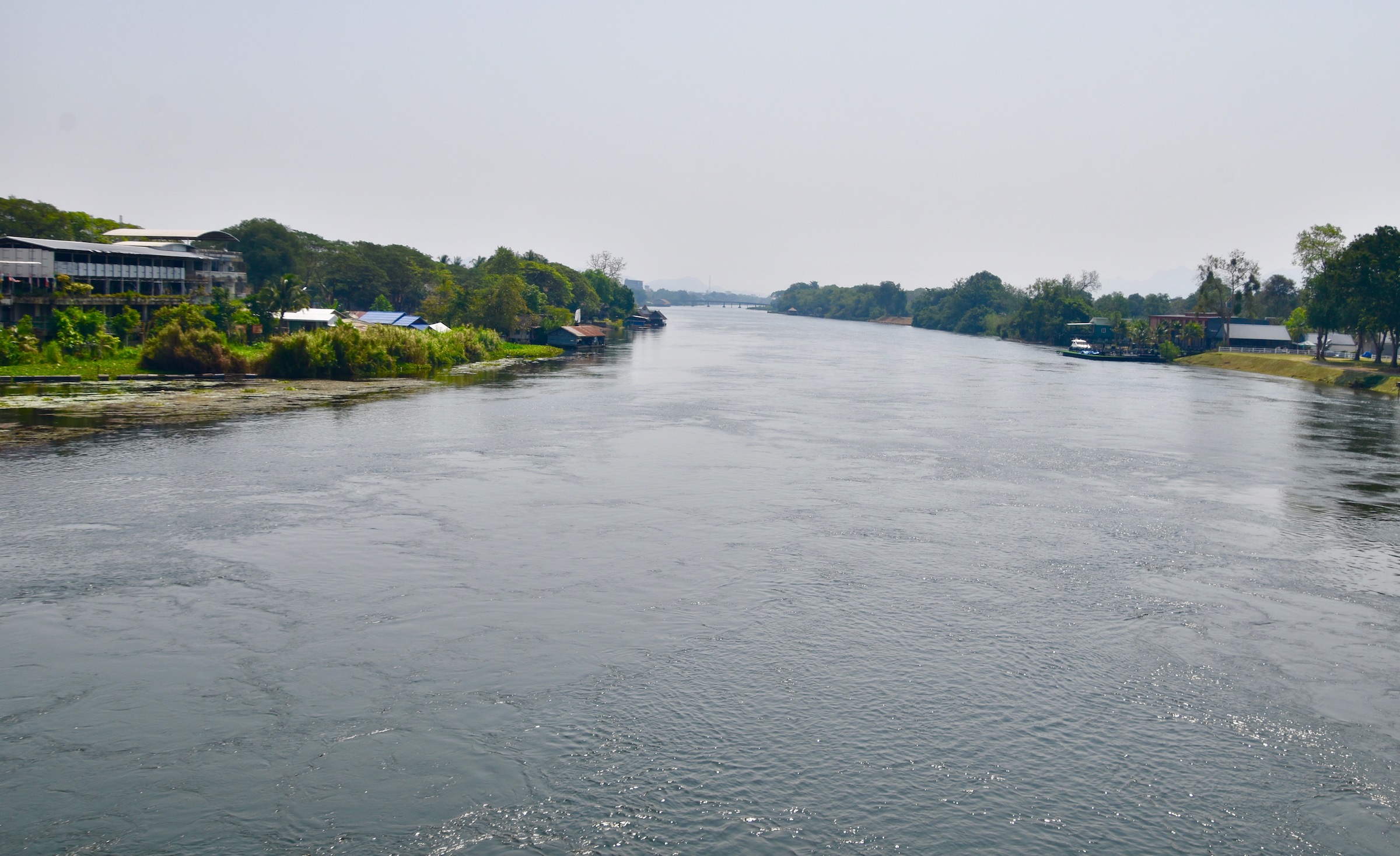
There are a number of spots of interest on the way to Nam Tok as the railway makes a slow ascent to the station there. This is a small resort on a bend in the river.
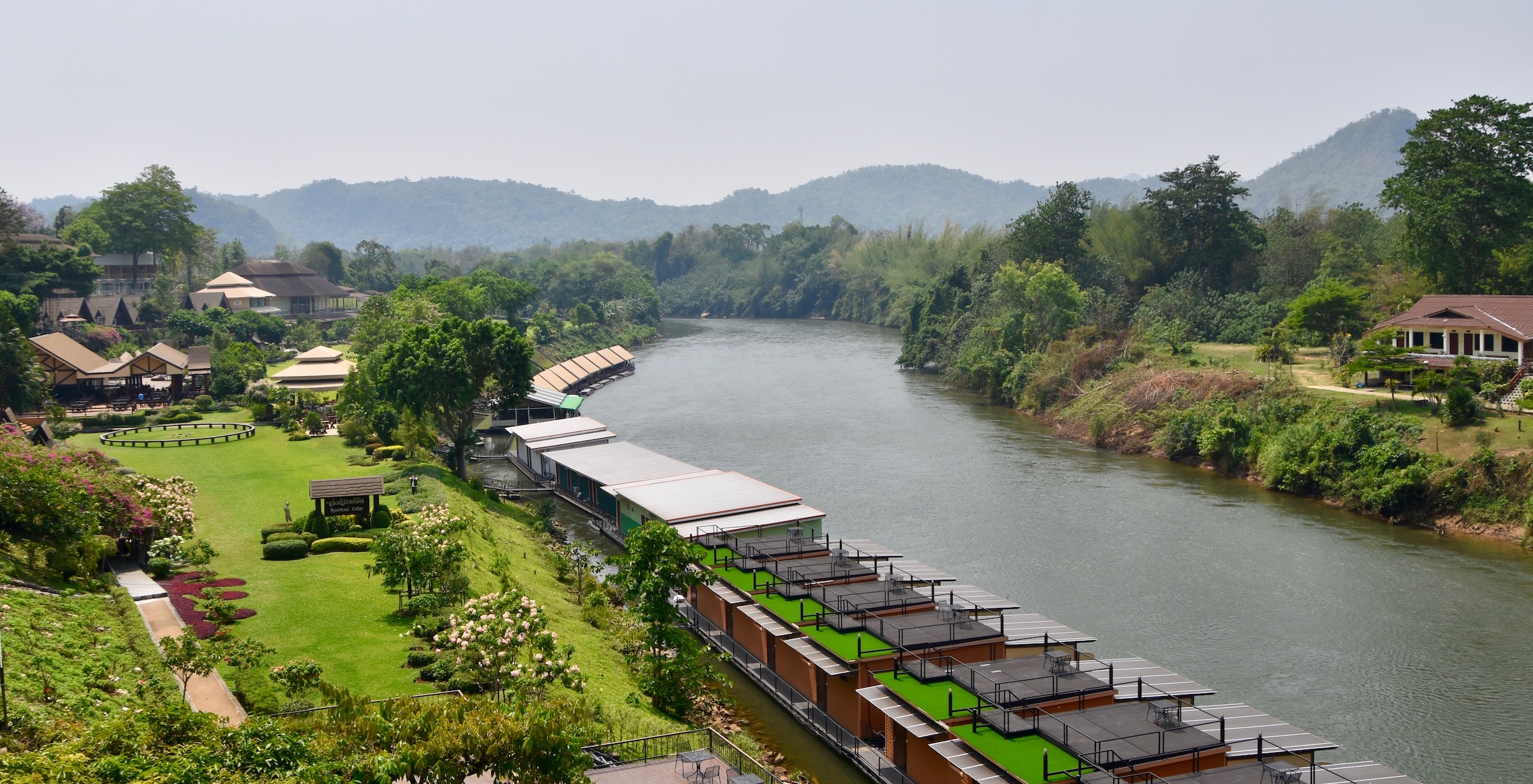
We disembark at Nam Tok and after a quick lunch meet up with our driver and leave the River Kwai and its famous bridge behind us as we speed away back to Bangkok. I’m really glad we made this trip, not so much for the bridge, but for the sake and memory of those who died building it.
In the next post we’ll visit the World Heritage Site of Ayutthaya, the greatest archaeological site in Thailand. I hope you’ll join us.

